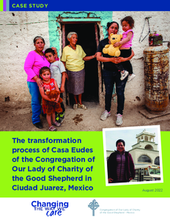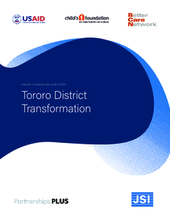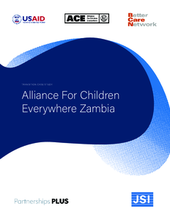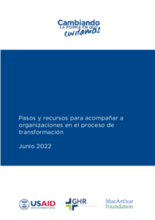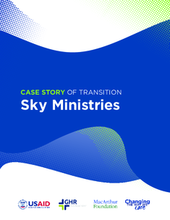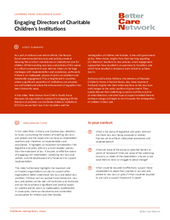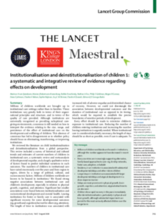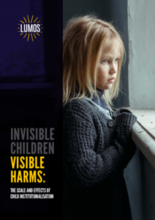Understanding the evidence and impetus for change and global care reforms
Before considering the nuances of transition from residential care to family-based care, it is important to first understand the reasons why there is a global shift away from the use of residential care for children and what is driving these changes.
The aim of this step is therefore to develop a high-level understanding of the reasons why care and child protection systems are being reformed across the world and why residential care for children is being scaled back and replaced with family-based care.
This step is focused on learning. Key actions may include facilitating or participating in learning through:
- Workshops
- Forums
- Webinars
- Advocacy events
- Conferences
- Trainings
- Online discussions
- Self-led learning
- Access to relevant learning resources
Learning topics that may be important to explore during this step include:
- The risks and impacts of institutionalisation on children’s development and wellbeing
- The importance of the family environment for children’s optimal development
- The reason for the prioritization of family-based care
- The international child rights framework: International norms and commitments underpinning global care reforms
- What are care reforms: Strengthening and transforming child protection and care reform systems to better protect the rights and best interests of children
- The continuum of care
- Decision making in the best interests of the child, including the necessity and suitability principles.
- Understanding how residential care service transitions fit into the continuum of care and broader child protection and care reform efforts
- Perspectives of care experienced young people and children
- The role of donors, partners and volunteers in supporting the rights and best interests of vulnerable children
- Faith Perspectives: Looking at children’s care and protection through a faith-based lens (for faith actors)
The key milestones associated with this step are, organizations key decision makers demonstrate:
- A level of understanding of what is driving the changes to children’s care and the shift away from residential care towards family-based care.
- An in-principal agreement with the prioritization of family-based care for children
- Readiness to explore the implications of transition to family-based care for the individual organisation in the specific local context
Resources
Displaying 11 - 20 of 31
This case study highlights the transition of the Sisters of Our Lady of Charity of the Good Shepherd in Ciudad Juarez. It is an honest look at the emotional, logistical, and practical elements involved in transitioning from a residential care model which existed for more than 100 years to a provider of community-based and family-centered services.
Based in Uganda, Child’s i Foundation successfully transitioned their residential programs before deciding to expand their vision and seek to bring about care reform to the entire district of Tororo. Partnering with the district level government and several CCIs, Child’s i Foundation carried out an extensive analysis and assessment of the Tororo region which provided information to guide the ensuing transitions of CCIs throughout the region.
Alliance for Children Everywhere (ACE) Zambia is a US-funded organization that transitioned from providing residential care in Zambia to pioneering family-based care, including foster care, and supporting other residential care service providers to transition. With important links to the Zambian government, ACE Zambia has been a key actor in supporting the development of policies, programs and guidelines that are now utilized across the country.
Este documento está diseñado para orientar a las personas u organizaciones que están apoyando un proceso de transición para pasar de proporcionar atención residencial a un modelo que promueva la atención familiar y comunitaria. El documento está diseñado en torno a las Fases de la Transición de Better Care Network. Se basa en el trabajo que Changing the Way We Care ha realizado en los últimos años para apoyar a diferentes proveedores de atención residencial, tanto religiosos como laicos, en su propio proceso de transición. Hay ejemplos y enlaces a herramientas relevantes, mensajes y actividades sugeridas que pueden utilizarse para apoyar las diferentes fases del proceso.
This case story is meant to illustrate transition, the actors involved, the challenges and the success factors; recognizing that each transition is an individual process with different starting points, different dynamics and different evolutions.
In this video, Peter Kamau from Child in Family Focus discusses his organisation’s approach to engaging with the directors of privately-run charitable children’s institutions (CCI’s) to secure their buy-in for transition and the reintegration of children into families, in line with government policy.
This paper reviews the literature on child institutionalisation and deinstitutionalisation from a global perspective. This review included a survey of historical and cultural trends and estimates of current numbers of children in institutional care, a systematic review and meta-analysis of developmental sequelae, and a largely qualitative review of factors found to predict individual variations in such outcomes.
This is a summary of three major new papers published in the Lancet with the support of Lumos which shed new light on the situation of children living in institutions globally and make important recommendations for donors, governments, civil society and individuals to help ensure every child can grow up in a safe, supportive and loving family and have the best chance in life.
A World Without Orphans original animation. Find out more at: www.worldwithoutorphans.org
In this video, Children in Families ABLE project practitioners discuss their key learning with respect to supporting caregivers to care for children, including the importance of managing stress and expectations, developing trusting relationships and taking a whole family approach to support.

